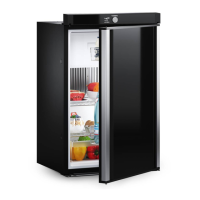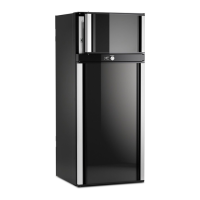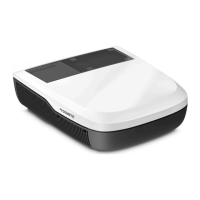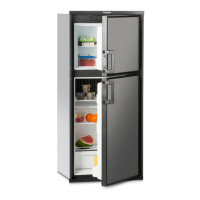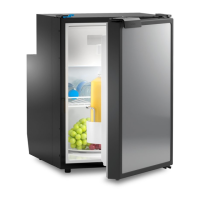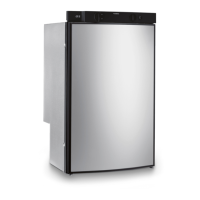The refrigerator does
not cool sufficiently.
The ventilation around
the cooling unit is not
sufficient.
Check that the ventilation grille is
not obstructed.
The evaporator is iced up.
Check whether the refrigerator
door is properly closed. Defrost
the refrigerator.
The temperature is set too
high.
Set a lower temperature.
The ambient temperature is
too high.
Remove the ventilation grille for a
while so that warm air can escape
quicker.
Too much food at once was
placed in the refrigerator.
Remove an item.
Too much warm food at once
was placed in the refrigerator.
emove the warm food and leave
it to cool down before putting it in
again.
The refrigerator has not been
operating for very long.
Check the temperature again after
four or five hours.
Cleaning and maintenance
WARNING! Electrocution hazard
Always disconnect the refrigerator from the mains before you clean and service it.
NOTICE! Damage hazard
Do not use abrasive cleaning agents or hard objects during cleaning as these can damage the refrigerator.
Never use hard or sharp tools to remove ice or to free objects frozen onto the device.
Do not use any mechanical tools or any other tools to speed up the defrosting process.
➤ Clean the refrigerator regularly and as soon as it becomes dirty with a damp cloth.
➤ Make sure that no water drips into the seals. This can damage the electronics.
➤ Wipe the refrigerator dry with a cloth after cleaning.
➤ Check the condensate drain regularly.
Clean the condensate drain when necessary. If it is blocked, the condensate collects on the bottom of the refrigerator.
➤ Make sure that the air vents on the refrigerator are free of any dust and dirt so that heat can be released and the refrigerator is not damaged.
Maintenance
WARNING!
Work on gas and electronic installations may only be performed by a certified specialist.
NOTE
Have the refrigerator serviced after the vehicle has been out of commission for a longer period of time. Contact customer service to do so.
➤ After putting the device into use for the first time, and then at two-year intervals, have the gas installation and the connected exhaust gas
guides inspected by an authorised expert for compliance with standard EN 1949.
➤ The gas burner must be cleaned to remove soiling when necessary, but at least once a year. If liquefied petroleum gas (tank or refillable
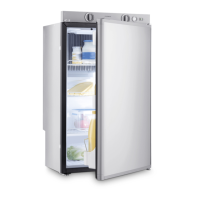
